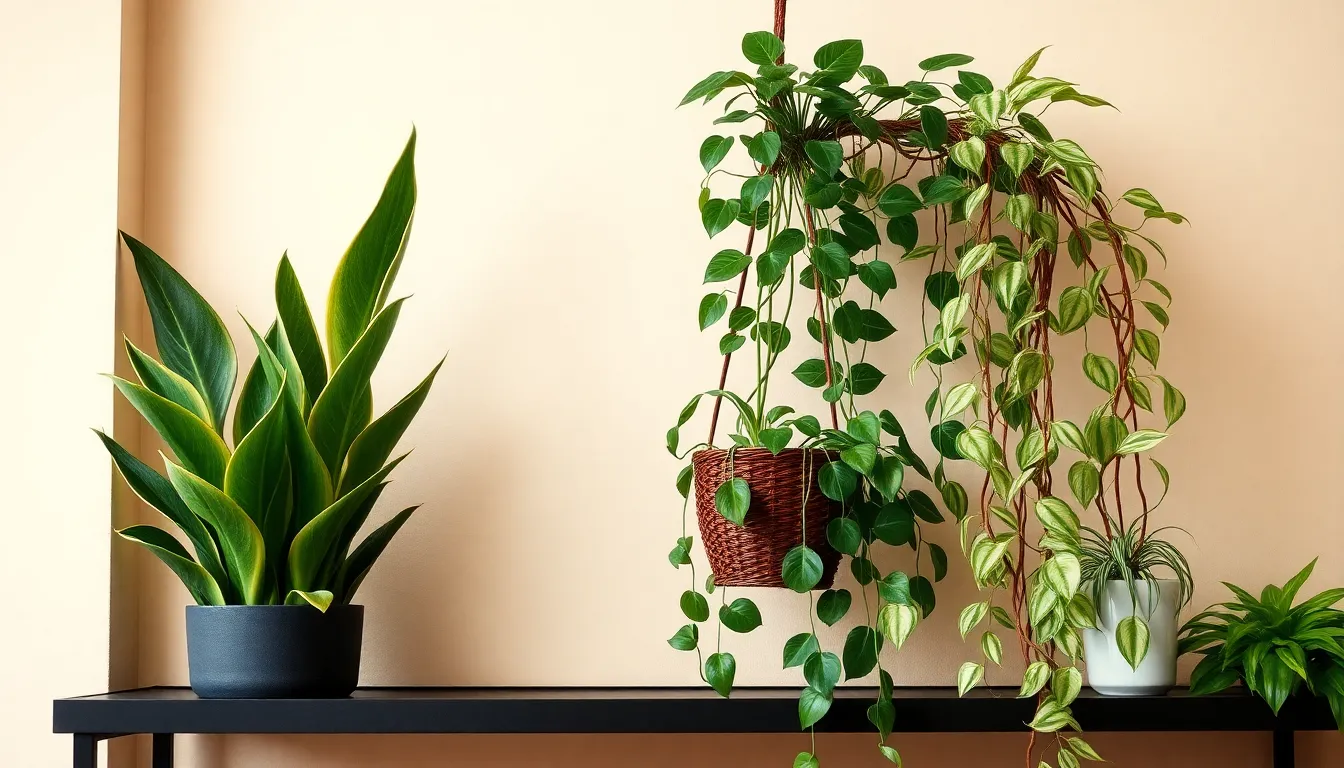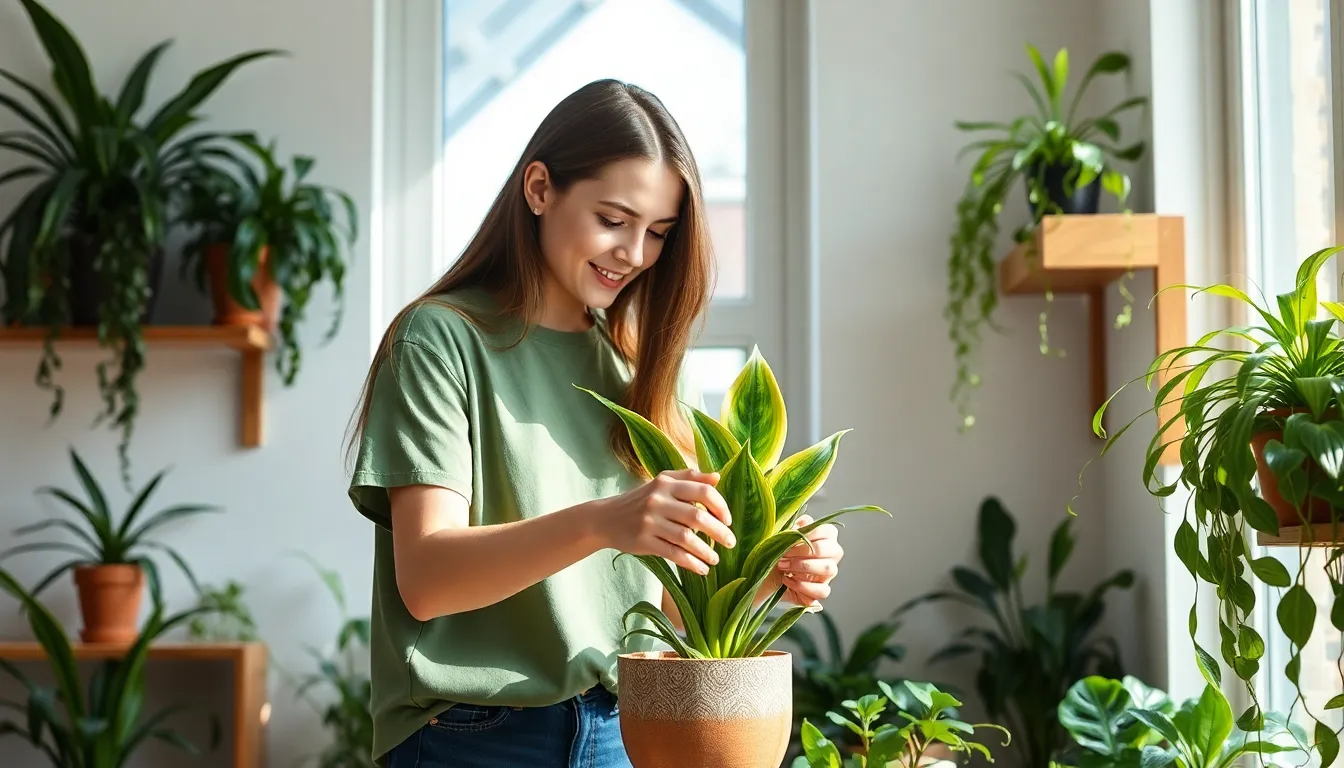Imagine transforming your home into a lush oasis without needing a PhD in botany. Easy-to-grow houseplants are the perfect solution for anyone who wants to embrace their inner plant parent without the stress of a black thumb. These resilient green companions thrive on neglect and will forgive even the most forgetful of caregivers—like that time they forgot to water their last plant for a month.
Benefits of Easy to Grow Houseplants
Easy to grow houseplants offer numerous advantages for anyone looking to enhance their home environment. Resilient and low-maintenance, they provide significant benefits for both health and aesthetic aspects.
Improved Air Quality
Improving air quality stands as one of the most notable benefits of easy to grow houseplants. Many common varieties, such as Snake Plant and Spider Plant, excel at filtering indoor pollutants. These plants efficiently absorb harmful substances, including formaldehyde and benzene, which frequently linger in indoor environments. Research shows that houseplants can lower levels of carbon dioxide, promoting a healthier atmosphere. For instance, NASA’s Clean Air Study found that specific plants effectively remove toxins while also releasing oxygen. In spaces with plants, individuals may experience reduced fatigue and enhanced overall well-being.
Enhancing Aesthetic Appeal
Enhancing aesthetic appeal comes naturally with easy to grow houseplants. They add visual interest, color, and life to interior spaces, transforming plain areas into inviting environments. With a variety of shapes and sizes, plants such as Pothos and ZZ plant fit seamlessly into different decor styles. Similarly, vibrant foliage creates a welcoming atmosphere, making homes feel more cozy. Positioning plants strategically throughout a space can draw attention to focal points, encouraging a harmonious design. Incorporating greenery into home decor also promotes a connection to nature, enriching emotional and psychological well-being.
Popular Easy to Grow Houseplants

Several popular houseplants offer beauty and ease of care, perfect for creating a vibrant home environment.
Snake Plant
Snake Plants thrive under low light conditions, making them ideal for various indoor spaces. They tolerate neglect, requiring infrequent watering, usually every few weeks. This plant also removes harmful toxins from the air, contributing to a healthier indoor atmosphere. Snake Plants possess attractive, upright foliage that adds visual interest to any room. Known for their resilience, these plants can endure dry air and temperature fluctuations.
Pothos
Pothos, also known as Devil’s Ivy, can grow in a range of lighting conditions, from low to bright indirect light. This fast-growing vine produces trailing stems that look stunning in hanging baskets. Watering occurs when the soil dries out, making maintenance simple. Pothos enhances air quality by filtering indoor pollutants, promoting a healthier living environment. Varieties such as golden and marble queen offer striking foliage patterns that enrich home decor.
Spider Plant
Spider Plants adapt to varying light levels and are forgiving about watering schedules. They generate small offshoots, or “pups,” that create a cascading effect when placed in containers. Spider Plants also improve indoor air quality by removing harmful substances. Their arching, green and white leaves add a touch of elegance to any space. This plant’s resilience ensures it thrives even in less-than-ideal conditions.
Tips for Caring for Easy to Grow Houseplants
Caring for easy-to-grow houseplants requires attention to specific needs, ensuring a thriving environment. This section outlines essential tips for successful plant care.
Choosing the Right Pot and Soil
Select pots with drainage holes to prevent excess water accumulation. A well-draining potting mix is crucial for promoting healthy root growth. Consider using a blend of peat moss, perlite, and vermiculite for optimal moisture retention and aeration. Match the plant size to the pot; a small plant needs a smaller pot to avoid waterlogged roots. Repotting becomes necessary when roots begin to outgrow the container. When selecting materials, use breathable options like terracotta for better airflow.
Watering and Light Requirements
Water plants when the top inch of soil feels dry to the touch. Infrequent watering benefits many easy-to-grow varieties, as they tolerate low moisture. Observing the plant’s appearance can guide the watering schedule; droopy leaves may indicate thirst, while yellowing leaves might signal overwatering. Light requirements differ among houseplants; for example, the Snake Plant adapts well to low light, while Pothos flourishes in bright, indirect light. Always place plants in spots that match their light needs, adjusting as seasons change.
Common Challenges and Solutions
Houseplants can bring joy and life into a home, but challenges often arise. Addressing these common issues helps ensure plants thrive.
Overwatering Issues
Overwatering constitutes a leading problem for many houseplant owners. Signs of overwatering include yellowing leaves and root rot. To prevent this, check the soil moisture before watering. Individuals should wait until the top inch of the soil feels dry. Using pots with drainage holes helps excess water escape, preventing soggy roots. Choosing a well-draining potting mix, like a blend of peat moss and perlite, promotes healthy roots. Adjusting watering frequency during different seasons can also help maintain optimal moisture levels.
Pest Management
Pests may threaten the health of easy-to-grow houseplants. Common pests like spider mites and aphids can appear, especially in dry indoor environments. Inspecting plants regularly supports early detection of infestations. Introducing natural predators, such as ladybugs, proves effective for control. Additionally, using insecticidal soap or neem oil can manage unwanted pests. Maintaining good plant hygiene, like removing dead leaves and dust, also reduces the likelihood of pest problems. Keeping plants healthy through proper care strengthens their resilience against infestations.
Conclusion
Embracing easy-to-grow houseplants can significantly enhance any living space. These resilient varieties not only improve air quality but also add a touch of nature’s beauty to homes. With minimal care requirements and adaptability to various light conditions, anyone can enjoy the benefits of greenery without feeling overwhelmed.
By choosing plants like Snake Plant, Pothos, and Spider Plant, individuals can create an inviting atmosphere that fosters well-being. Following simple care tips ensures these plants thrive, making the journey of nurturing houseplants a rewarding experience. Whether you’re a seasoned plant enthusiast or just starting out, incorporating these easy-to-grow options into your home is a step toward a healthier and more vibrant environment.

